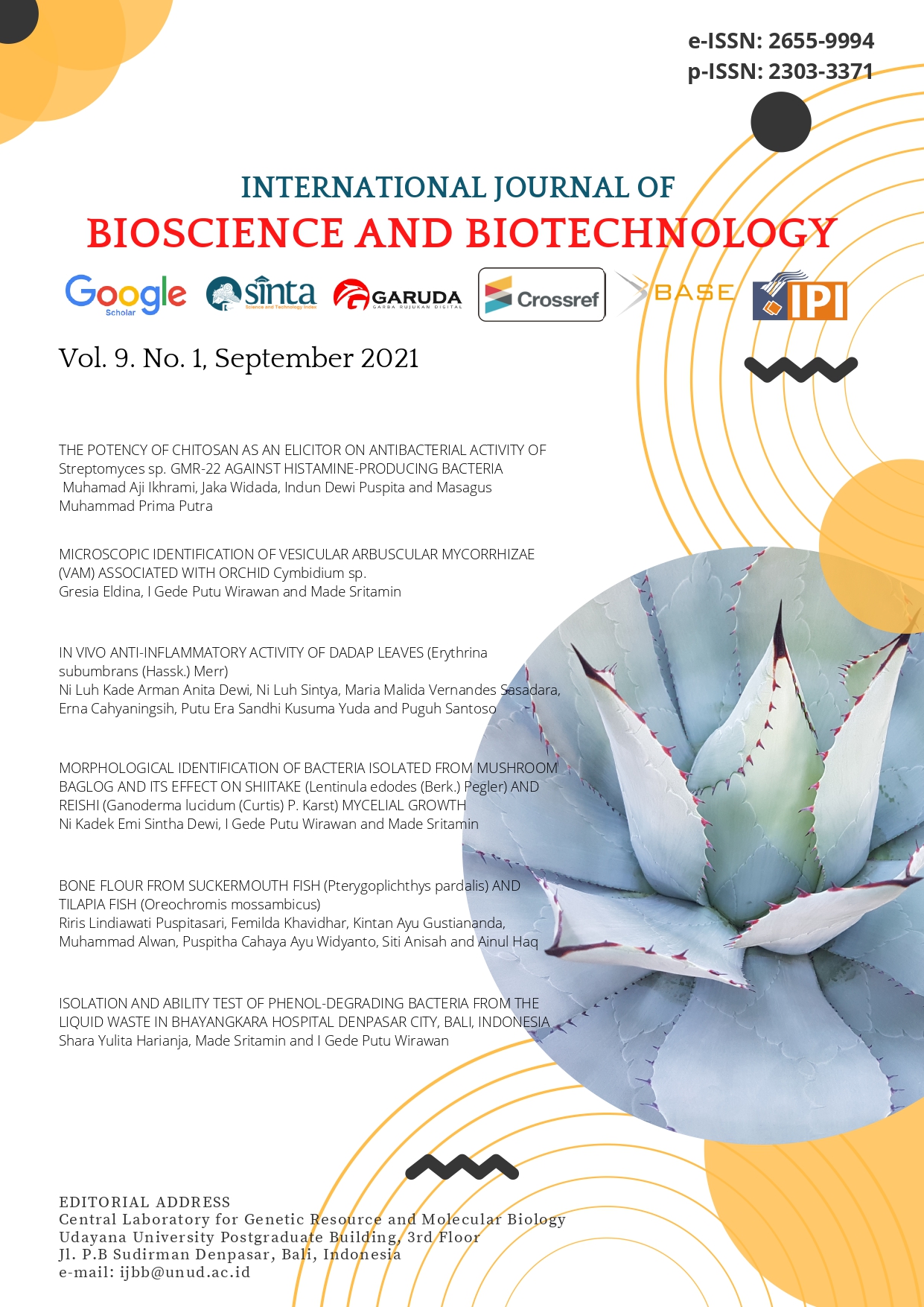MORPHOLOGICAL IDENTIFICATION OF BACTERIA ISOLATED FROM MUSHROOM BAGLOG AND ITS EFFECT ON SHIITAKE (Lentinula edodes (Berk.) Pegler) AND REISHI (Ganoderma lucidum (Curtis) P. Karst) MYCELIAL GROWTH
Abstract
Reishi (Ganoderma lucidum (Curtis) P. Karst) and shiitake (Lentinula edodes (Berk.) Pegler) mushrooms have high economic value and contain bioactive metabolites that provide heatlh benefits. Shiitake mushrooms have a delightfully unique taste as an edible mushroom. Mushroom production can be increased by utilizing microbes known as MGPB (Mushroom Growth Promoting Bacteria). This study aimed to determine the presence of bacteria associated with shiitake and reishi mushrooms in the baglog and determine how these bacteria influence the growth of shiitake and reishi mycelium. Bacteria was isolated from the mushroom baglog then were purified and centrifuged to obtain the cell-free extract. Furthermore, the bacterial cell-free extracts were poured on PDA media, then shiitake and reishi mycelium were inoculated to test the effect of bacteria isolates on fungal growth. The results showed that three isolates have the potential as MGPB in reishi mushroom, i.e., isolate S1C, S1D, and S2A. Reishi mycelium grown on isolate S2A achieved the fastest maximum growth on day 6th. In shiitake mushroom, it was seen that all isolates showed a negative effect on mycelium growth. Shiitake mycelium in isolate S1C, S1D, S2A, and S2B were seen to form a clear zone on PDA medium.






